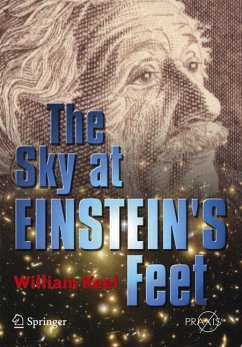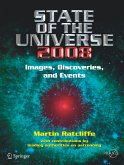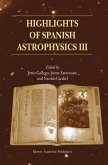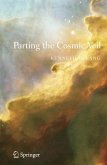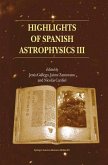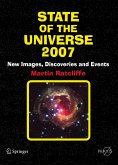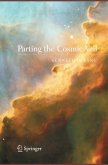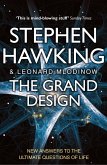The insights of relativity have illuminated a century of astronomical discovery, often going beyond the phenomena that Einstein lived to see. This book shows, in nonmathematical ways, how deeply these ways of viewing the Universe have informed our interpretations of it, and how many of the amazing discoveries of these decades have made sense only as part of Einstein's universe.
The author brings together the ways in which we see the bizarre effects of relativity played out on a cosmic scale. None of this is particularly new to practicing astronomers, but much has yet to be seen outside technical journals. The presentation avoids mathematics (except for the most famous equation in all of physics!), and is designed to be accessible to the interested public. Gravitational lenses, the visible effects of light-travel delays, the search for black holes, the ways relativity in atomic nuclei makes stars shine, are all treated. In many cases, some of the principals are still alive and provided new commentary on the discoveries. Numerous illustrations are newly produced from data in the archives of such observatories as Hubble and Chandra.
Specifically traces the impact of Einstein's ideas on astronomy, including the way we interpret observations of stars and galaxies.
Includes comments from principals in important discoveries, illuminating the processes behind these results.
Presents many applications of relativity that have not been shown in earlier popular-level books and illustrates how deeply physics permeates the way we interpret many astronomical phenomena.
Highlights light-travel delays in cosmic jets, using gravitational lensing to trace cosmic mass distribution.
Illustrations employ new and archival data from ground- and space-based observatories.
The author brings together the ways in which we see the bizarre effects of relativity played out on a cosmic scale. None of this is particularly new to practicing astronomers, but much has yet to be seen outside technical journals. The presentation avoids mathematics (except for the most famous equation in all of physics!), and is designed to be accessible to the interested public. Gravitational lenses, the visible effects of light-travel delays, the search for black holes, the ways relativity in atomic nuclei makes stars shine, are all treated. In many cases, some of the principals are still alive and provided new commentary on the discoveries. Numerous illustrations are newly produced from data in the archives of such observatories as Hubble and Chandra.
Specifically traces the impact of Einstein's ideas on astronomy, including the way we interpret observations of stars and galaxies.
Includes comments from principals in important discoveries, illuminating the processes behind these results.
Presents many applications of relativity that have not been shown in earlier popular-level books and illustrates how deeply physics permeates the way we interpret many astronomical phenomena.
Highlights light-travel delays in cosmic jets, using gravitational lensing to trace cosmic mass distribution.
Illustrations employ new and archival data from ground- and space-based observatories.
From the reviews:
"One hundred years ago Albert Einstein published his special theory of relativity. In the century following his breakthrough, his insights have illuminated astronomical discovery. Keel's book shows how deeply relativity has informed our interpretation of the Universe, and how many of the amazing discoveries of the last century can be properly interpreted only with the use of the special and general theories of relativity." Mercury Jan-Feb 2006
"[T]his book is a pleasant surprise in most respects... [T]his is the best and most accessible summary of relativistic effects in astronomy that I have had the pleasure of reading. I'm sure I'll inevitably dip back into it again." Roger Feasey, in Journal of the Auckland Astronomical Society
"In 'The Sky at Einstein's feet', William Keel follows a different path and instead considers the impact that Einstein's relativity has had on astrophysics. This is an enormous task, but Keel successfully covers several seemingly disparate areas ... . Keel has done a good job of summarising Einstein's impact. Noteworthy is his dedication to those who 'have been unjustly forgotten' ... . this broad overview and historical content will appeal to the popular science market ... ." (Geraint F Lewis, Australian Physics, Vol. 43 (2), 2006)
"The aim of this interesting book is to describe at a popular level how relativity theory has influenced the development of astronomy. ... The style is lively and engaging. There are plenty of interesting anecdotes, some from the author's own experience, which give a real idea of both the rigours and the excitement of astronomical research. ... The book is copiously illustrated, with some stunning images ... . the book would make excellent motivational background reading for students struggling with a first relativity course." (Andrew King, The Observatory, Vol. 126 (1194), 2006)
"Keel, in his book, wants to share with a wide audience the impact of relativity on astronomy. ... clear, concise explanations introduce most new terms ... . This, together with descriptive introductions to chapters and a good selection of illustrations make the book a well detailed, enjoyable read for the average amateur astronomer and those interested in the physics behind the pretty pictures of the night sky. With this book, Keel should achieve his objective ... ." (Mark Mortimer, www.universetoday.com, May, 2006)
"This book is a review of current observational astronomy and the contribution of Einstein's thought to our present understanding. It possesses considerable depth of coverage and insight and, generally, reads very well. ... If you want the title explained, you must read the book. William Keel is a talented writer and that is about all I know about him. ... For a general reader this book provides insight and information in an entertaining manner." (Roger O'Brien, Journal of the British Astronomical Association, Vol. 116 (4), 2006)
"One hundred years ago Albert Einstein published his special theory of relativity. In the century following his breakthrough, his insights have illuminated astronomical discovery. Keel's book shows how deeply relativity has informed our interpretation of the Universe, and how many of the amazing discoveries of the last century can be properly interpreted only with the use of the special and general theories of relativity." Mercury Jan-Feb 2006
"[T]his book is a pleasant surprise in most respects... [T]his is the best and most accessible summary of relativistic effects in astronomy that I have had the pleasure of reading. I'm sure I'll inevitably dip back into it again." Roger Feasey, in Journal of the Auckland Astronomical Society
"In 'The Sky at Einstein's feet', William Keel follows a different path and instead considers the impact that Einstein's relativity has had on astrophysics. This is an enormous task, but Keel successfully covers several seemingly disparate areas ... . Keel has done a good job of summarising Einstein's impact. Noteworthy is his dedication to those who 'have been unjustly forgotten' ... . this broad overview and historical content will appeal to the popular science market ... ." (Geraint F Lewis, Australian Physics, Vol. 43 (2), 2006)
"The aim of this interesting book is to describe at a popular level how relativity theory has influenced the development of astronomy. ... The style is lively and engaging. There are plenty of interesting anecdotes, some from the author's own experience, which give a real idea of both the rigours and the excitement of astronomical research. ... The book is copiously illustrated, with some stunning images ... . the book would make excellent motivational background reading for students struggling with a first relativity course." (Andrew King, The Observatory, Vol. 126 (1194), 2006)
"Keel, in his book, wants to share with a wide audience the impact of relativity on astronomy. ... clear, concise explanations introduce most new terms ... . This, together with descriptive introductions to chapters and a good selection of illustrations make the book a well detailed, enjoyable read for the average amateur astronomer and those interested in the physics behind the pretty pictures of the night sky. With this book, Keel should achieve his objective ... ." (Mark Mortimer, www.universetoday.com, May, 2006)
"This book is a review of current observational astronomy and the contribution of Einstein's thought to our present understanding. It possesses considerable depth of coverage and insight and, generally, reads very well. ... If you want the title explained, you must read the book. William Keel is a talented writer and that is about all I know about him. ... For a general reader this book provides insight and information in an entertaining manner." (Roger O'Brien, Journal of the British Astronomical Association, Vol. 116 (4), 2006)

